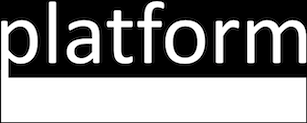If you’re in a hurry, or don’t like to read, I have good news: upload a pitch deck to DeckSend and it will use GPT to analyze your deck and make suggestions on how to improve. It will also compare your flow to the recommended flow in this article. Click on the DeckSend link on the left or access directly at https://decksend.net
Investors typically receive hundreds of pitch decks a week, so the time they spend on each deck is only a few minutes. This is in stark contrast to founders, who will sweat for hours over word choice and pixel-perfect layout.
With this in mind, a “perfect pitch” is one that clearly and concisely communicates why your startup is one of the small % an investor should consider looking at more closely.
To do this, it’s important to understand not just what investors are looking for but to also understand what you want them to think and feel after seeing each slide.
Caveat: this recommended flow mainly applies to early-stage pitches (pre-seed/seed/Series A). As a company scales, more and more of a pitch comprises financial metrics showing how the business is already working, and less and less the vision (although that remains important).
Slide #1: Title with Tagline
Your tagline should succinctly communicate what your startup does.
What you want the investor to think: this sounds intriguing, I already have a good sense of what this startup wants to do, I haven’t just seen 20 similar pitches, and I’m willing to pay attention and learn more.
Slide #2: The Problem
Describe the unmet need or problem that you have identified and want to solve. You should communicate clearly why the problem is big and painful enough that your target customer will be willing to pay for a solution. Typically this means that it is the biggest, or one of the biggest problems, in the mind of your target customer.
What you want the investor to think: this startup has identified an enormous and real problem and solving it could result in massive returns. I can’t think of anyone who has already solved this problem well so it's not too late.
Slide #3: Your Solution
Describe your solution, how it neatly solves the problem you’ve identified, and how it is unique. In the era of low-code/no-code, software development is increasingly commoditized but, ideally, you and your team should be uniquely well-placed to build the solution due to specialized skills or knowledge.
What you want the investor to think: this team can deliver this solution, and the customer can easily adopt it, but it will be hard for competitors to copy it.
Slide #4: Why Now?
This is arguably the most important slide in your pitch. What has changed in the world that means now is the right time to build this startup (as opposed to 5 years ago, or in 5 years time)?
Normally, some kind of disruption is required to make room for a new startup and allow it to grow big. The sources of this disruption are typically new technology enablers (e.g. Generative AI), regulatory changes (e.g. NIL in college athletics), or new channels to market (e.g. advertising on social media).
What you want the investor to think: there is a huge new opportunity here that not everyone has appreciated and this founder/team has spotted it early. This team is riding on a wave versus trying to create their own wave.
Slide #5: The Team
Who is on the team and why will they succeed in building this startup? Do they have prior founder experience or prior exits as a founder? Have they at least worked at early-stage, high-growth startups previously? Do they have a background that gives them unique insight, expertise, or reason to pursue the startup’s mission?
Depending on the strength of your team, this is the one slide that you might move around in your flow. If your team is very strong - e.g. prior exits from venture-backed startups or unique domain expertise - you might want to slot your team slide in as slide #2. If the team is weaker, you might want to leave it until closer to the end.
What you want the investor to think: this founder or team has what it takes to make this happen. They have no illusion about how hard early-stage startup life is. I will likely enjoy working with this team for the next 7-10 years. I want to meet them.
Slide #6: Unit Economics
How much does it cost you to acquire a customer (CAC), and how quickly do they pay you back enough to acquire another customer (CACD)?
If you are new to these concepts, check out Platform’s unit economics calculator: https://calculator.platformstud.io
Many people talk about LTV: CAC ratio but I am not a fan of this metric for early-stage startups because the “LT” (lifetime) is not known for a while.
What you want the investor to think: CACD likely is, or will be, < 6 months, so the business can scale quickly, without having to raise more money to buy growth.
Slide #7: Go-to-Market
What channel(s) will you use to acquire customers? What have you done to validate that the channel you’ve chosen will deliver the CAC that you need for your unit economics to work? How will you sell?
What you want the investor to think: the founder/team has identified a customer acquisition channel and understands how to scale effectively and profitably.
Slide #8: Traction
If you already have a product live, what traction have you achieved so far? Show at least customer count, MRR, and gross margin. If selling a B2B solution, show the logos of the customers you have closed.
Also, show any evidence that customers like your solution enough to keep using it and tell others about it - churn and NPS.
What you want the investor to think: this is already scaling quickly and customers love it. If B2B, the customers are legitimate and referenceable.
Slide #9: Network Effects
How does the 1,000th customer benefit from the 999 that came before them? What barriers or moats are you creating over time that prevent others from copying what you have built?
What you want the investor to think: if this starts to really take off, I can be confident I’ve picked the winner because no one else will be able to reproduce it or catch them.
Slide #10: Financials
A summary that shows:
- number of customers/users
- top-line revenue & gross margin
- what you’re spending on customer acquisition (CAC)
- headcount cost, broken out by R&D, S&M, and G&A
What you want the investor to think: this financial plan is plausible, based on my experience with their customer acquisition channel and sector. Their unit economics will work (CACD < 6 months) and they are likely to grow fast enough to meet the criteria for their next funding round before they run out of money.
Slide #11: Competition
Another critical slide to get right. The “gold standard” here is a 2x2 matrix showing logos of your competitors, with you positioned top-right (also commonly referred to as the “Gartner quadrant”).
The choice of the two axes you use for your 2x2 is critical in communicating your positioning and differentiation. Personally, I pay much more attention to the axes than to the specific companies shown.
What you want the investor to think: they understand clearly how they are different, and there is enough room in the market for them. They understand that they either need to be 10x faster, better and/or cheaper than the incumbents, or this is a brand new opportunity where there is more of a green field to stake out a position.
Slide #12: The Ask
Don’t be coy! How much money are you raising and on what terms? What are your primary uses of the money? Who is already invested?
What you want the investor to think: this is a deal that is reasonable and in my wheelhouse. They are raising the right amount of money, at the right time, and are clear about what they need it for.
Today (2023), the vast majority of pitch deck views happen asynchronously, online rather than in person. Therefore, remember that the purpose of the pitch deck is to get a meeting, not to communicate everything you want to say. Brevity is your friend.
Also, it is fine to have a different version of the deck you present from if and when you get a meeting. In fact, investors actually like that because they’ve already seen the first deck so it’s nice to have new things to look at.
By the way, DeckSend’s Q&A feature lets you answer investors’ questions asynchronously, saving you from wasting time on meetings with investors that aren’t a fit.
In terms of the specific content of the slides, I will provide more detail in a subsequent article. In the meantime, a few pointers:
The biggest piece of feedback I give founders on pitch decks is “simplify, simplify, simplify”. The most common suggestion I make is “take away half the words, then take away another half”.
Remember that investors are only spending a few seconds on each slide, so keep it simple.
Another mental model is to think of an investor pitch as a children’s story. What attributes do children’s stories have?
- Big letters (large font size)
- Not too many words
- A simple story that is easy to follow
- Lots of pictures (and diagrams/charts)
- Clear heroes and villains (you vs your competition and your solution vs the status quo)
- A happy ending (you are going to be huge)
The view data in DeckSend will show you where your story is sticking and where you are losing people.
If you have any questions, please ask them in the thread below and others will have the opportunity to learn and share.
Credit to Tim Connors for his original “Perfect Pitch” spreadsheet which has guided me over the years. Even as we have transitioned from in-person pitches to just a few minutes of reviewing decks online, most of it still applies.

